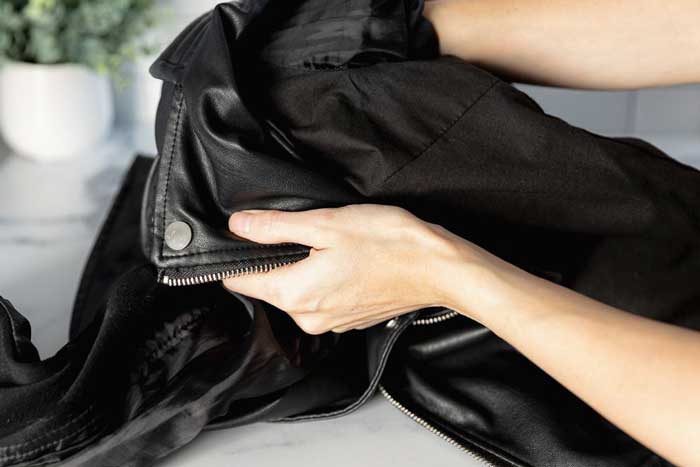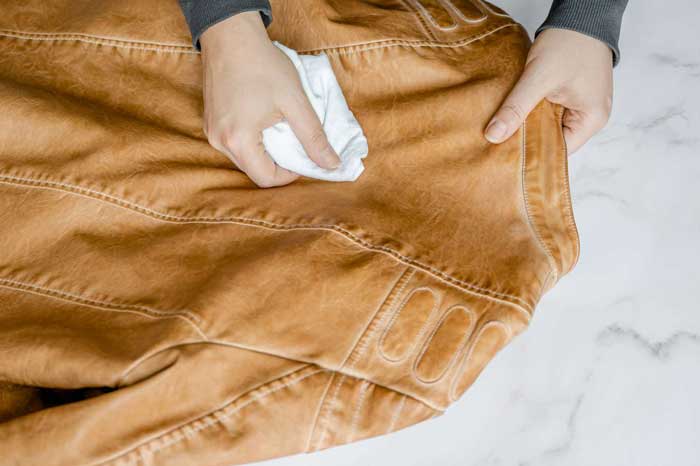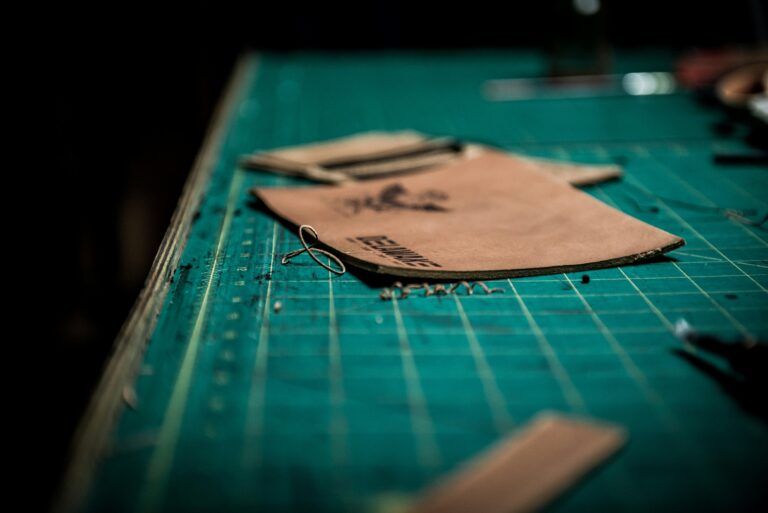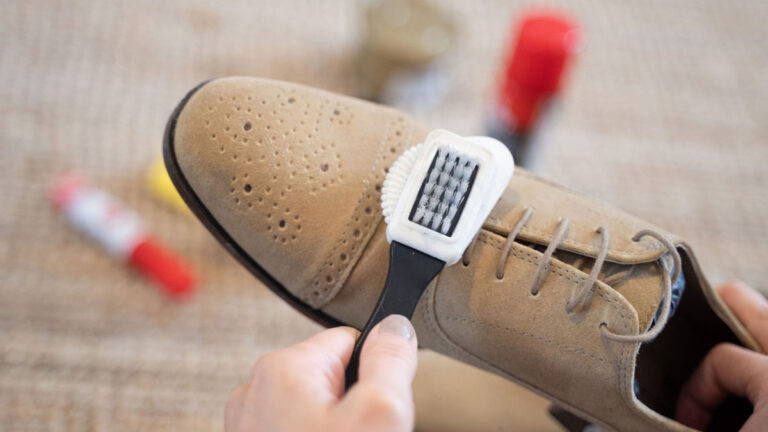How to Clean a Leather Jacket and Make It Last Longer
Your leather jacket is more than just a fashion statement; it’s an investment in style and durability. To keep it looking its best, regular maintenance is essential. Proper cleaning not only preserves its luxurious appearance but also extends its lifespan. The key lies in using the right techniques and products specifically designed for leather care.
Start by selecting a high-quality leather cleaner that suits your jacket’s type. Avoid harsh chemicals that can strip away natural oils, leading to dryness and cracking. Instead, opt for gentle, leather-friendly options. By incorporating these cleaning methods into your routine, you’ll maintain your jacket’s supple texture and rich color.
Attention to detail is crucial when cleaning your leather jacket. Focus on seams and crevices where residue tends to accumulate, and always use soft, lint-free cloths to avoid scratches. With these tips, you can ensure your leather jacket remains a timeless piece in your wardrobe for years to come.
Key Takeaways
- Proper Maintenance Extends Lifespan: Regular and careful cleaning preserves the appearance and durability of a leather jacket, ensuring it remains a timeless wardrobe piece.
- Identify Leather Type: Different leather types, like suede, nubuck, and full-grain, require specific care protocols, so understanding your jacket’s material is crucial.
- Gentle Cleaning Methods: Use mild, leather-specific cleaners and avoid harsh chemicals to maintain the jacket’s natural oils and prevent damage.
- Detail-Oriented Cleaning: Focus on seams and crevices, and always use soft, lint-free cloths to avoid scratches while cleaning.
- Conditioning is Key: Applying a suitable conditioner helps keep the leather supple and prevents cracking, but avoid overapplication to maintain breathability.
- Consider Professional Services: For tough stains or comprehensive care, professional cleaning can ensure the jacket’s longevity and appearance remain intact.
Understanding Your Leather Jacket
Start by identifying the type of leather your jacket is made from. Various types require different care protocols, and knowing this helps in selecting the right cleaning technique. Suede and nubuck are more delicate and often require professional cleaning, while full-grain leather is more robust and can withstand gentle at-home cleaning methods.

Types of Leather
- Suede: This type has a soft texture but is susceptible to water stains and scratches.
- Nubuck: Similar to suede but more resilient, requiring specific maintenance techniques.
- Full-Grain: The most durable and common in leather jackets, offering excellent patina over time.
- Corrected-Grain: Treated to improve appearance, less natural than full-grain.
Care Protocols
- Avoid Harsh Cleaners: Bleach and ammonia-based products strip leather oils.
- Use Mild Soap: Opt for solutions specifically formulated for leather.
- Test Products: Before applying, test on a hidden area to prevent discoloration.
Expert Insights
An expert tip is to use leather conditioner after cleaning. This keeps the jacket supple and prevents cracking. Apply it with a soft cloth using circular motions, ensuring even coverage. Too much conditioner, but, can clog the leather’s pores, affecting breathability.
Practical Guide
- Identify Leather Type: Check the label or consult a specialist if unsure.
- Select Cleaning Products: Ensure they’re compatible with your leather type.
- Regular Maintenance: Clean your jacket every few weeks to maintain its appearance.
- Professional Cleaning: For stains or serious dirt, consider professional services.
Troubleshooting
- Water Stains: Gently blot, never rub. Allow to air dry.
- Scratches: Use leather conditioners to minimize their appearance.
Avoiding Common Mistakes
Ensure not to over-wet the leather during cleaning, and always allow it to dry naturally away from direct sunlight or heat sources, which can warp or crack the material.
Cleaning the Outside of a Leather Jacket
Maintaining the exterior of your leather jacket is crucial for its durability and appearance. Proper cleaning techniques prevent damage and enhance the jacket’s lifespan.

Dusting Off the Jacket
Begin the cleaning process by dusting off the jacket. Use a soft, dry cloth or a soft-bristled brush to gently remove surface dust and debris. Avoid harsh brushes or materials that might scratch the leather. Start from the top, paying attention to areas like collars and cuffs where dirt accumulates. This initial step ensures you don’t embed particles into the leather later during more intensive cleaning.
Using Soap and Water
Light cleaning can be achieved with a mild soap solution. Mix a small amount of gentle liquid hand soap or specialized leather cleaner with lukewarm water. Dampen a soft cloth with this solution (not soaking wet) to prevent over-wetting the leather. Wipe the jacket in a circular motion to remove surface dirt, avoiding rubbing that could push dirt deeper or cause discoloration. Rinse the cloth and wipe the jacket again to remove soap residue.
Applying Leather Cleaner
For thorough cleaning, apply a specialized leather cleaner. It’s essential to choose a product compatible with your leather type. Follow the product’s instructions, focusing on small sections at a time. Use gentle circular motions to lift stains and dirt. Always test the cleaner on an inconspicuous area first to check for potential discoloration. After cleaning, use a dry towel to remove excess cleaner and moisture.
Cleaning the Inside of a Leather Jacket

Paying attention to the interior of your leather jacket is crucial for maintaining its overall condition. The inside can harbor sweat oils and dirt, leading to unpleasant odors. Follow these steps to properly clean and care for the lining:
- Turn Inside Out: Start by turning your jacket inside out to expose the lining, making it easier to clean.
- Dust and Debris Removal: Use a vacuum cleaner with an upholstery attachment to gently remove dust and loose particles from the lining.
- Prepare Cleaning Solution: Mix warm water with a mild soap recommended for leather care. Dip a soft cloth into the soapy water, wringing it out well until it’s damp but not wet.
- Wipe Down the Lining: Carefully clean the lining by wiping it with the damp cloth, avoiding any direct contact with the leather. This helps remove oils and dirt without damaging the material.
- Tackle Tough Stains: For stubborn stains, use a specialized leather jacket cleaner, following its instructions meticulously.
- Remove Soap Residue: Rinse the cloth and go over the lining once more to remove any soap residue. This ensures no leftover soap damages the lining.
- Dry the Lining: Pat down the lining with a dry towel to absorb excess moisture, and hang the jacket in a well-ventilated area away from direct sunlight or heat to air dry naturally.
- Optional Freshening: Consider using a fabric freshener that is safe for leather. This can help maintain a pleasant scent inside the jacket.
Understanding these steps helps in prolonging the life of your leather jacket while maintaining comfort and freshness. Knowing the lining material is also key; cotton or polyester linings require different cleaning methods compared to silk or rayon. Always check the material before proceeding with any cleaning to avoid damage.
Tackling Tough Stains
Removing tough stains from leather jackets requires precise techniques and the right materials. Approaching each stain type methodically prevents damage and maintains the jacket’s appearance and longevity.

Food, Ink, and Oil Stains
Food stains often vanish with quick action. Use a soft sponge and mild soap solution to dab the stain in a circular motion. For ink stains, apply non-gel toothpaste using a soft cloth and rub gently. Blotting ink with a cotton swab dipped in nail polish remover also works—just be sure to blot, not rub. For oil stains, sprinkle baking soda or cornstarch and massage gently. Allow the powder to sit overnight to absorb oil, then wipe with a clean cloth.
Alcohol and Salt Stains
Salt stains dissolve with a water and white vinegar mixture applied using a clean cloth. This method prevents salt damage. For alcohol stains, absorption is key. Blot the spill gently without rubbing. Dip a sponge in warm soapy water to dab the area lightly, preserving the leather’s integrity.
Grease and Makeup Stains
Grease stains respond well to absorbent powders like baby powder. Dab and let the powder absorb the grease overnight. For makeup, use a soft cloth with mild soap, gently dabbing at the stain. Avoid scrubbing to protect the leather finish. Using a leather-specific cleaner can help tackle persistent stains—just ensure to patch-test first.
Conditioning and Protecting Your Jacket
Preserving a leather jacket’s quality involves not just cleaning but also conditioning it to maintain suppleness and prevent damage. Ensure your jacket continues to look its best while extending its lifespan.
Using a Leather Conditioner
Applying a leather conditioner keeps the material supple and crack-free.
- Choose Wisely: Select a high-quality conditioner that matches your jacket’s type of leather. Specialized conditioners penetrate deeply without leaving an oily residue.
- Test First: Apply a small amount of conditioner on an inconspicuous area to ensure it doesn’t cause discoloration.
- Application: Use a soft, clean cloth to rub the conditioner into the leather using circular motions. Cover the entire surface evenly.
- Avoid Overapplication: Too much conditioner can clog leather pores and affect breathability. Allow the leather to absorb fully, then wipe off any excess with a clean cloth.
- Dry Naturally: Let the jacket dry in a room with good air circulation, avoiding direct sunlight or heat sources that can warp or crack the leather.
Proper Storage Tips
Storing a leather jacket correctly is crucial for its preservation.
- Location: Store in a cool, dry area away from direct sunlight. Excessive moisture and heat can damage the leather.
- Hanger: Use a broad, padded hanger to maintain the jacket’s shape and prevent shoulder dimples.
- Cover: If possible, cover the jacket with a breathable garment bag to protect it from dust without trapping moisture.
- Avoid Compression: Ensure the storage space isn’t cramped to prevent creases and wrinkles in the leather.
Following these steps helps ensure that your leather jacket remains in top condition, allowing you to enjoy its timeless appeal, season after season.
Professional Cleaning Options
Consider professional cleaning to keep your leather jacket in pristine condition. Professionals understand the nuances of different leather types and use appropriate cleaning methods. Full-grain, aniline, suede, and nubuck leathers all require specific care to preserve their unique textures. Suede and nubuck, for example, demand delicate handling to avoid texture damage.
Professional cleaning involves a comprehensive cleaning process. Experts use specialized cleaners to remove dirt, stains, and odors from both the inside and outside of the garment. Every part of the jacket benefits from the cleaning, including seams and linings, which can accumulate sweat and oils over time.
Pressing is another key aspect of professional leather care. Garments regain their shape and refined appearance through professional pressing techniques. This step ensures that your jacket looks as good as new after cleaning.
Recoloring and reconditioning are sometimes part of professional services. These techniques maintain or restore the jacket’s original color and condition, helping it stay vibrant and supple. Professional recoloring matches the jacket’s original hue to protect its aesthetic value.
Conclusion
By following the detailed cleaning and maintenance strategies outlined, you can ensure your leather jacket remains a stylish and durable investment. Regular care with appropriate products not only preserves its appearance but also extends its lifespan. Understanding your jacket’s material and using the right techniques is key to avoiding common pitfalls like discoloration and damage. Don’t underestimate the value of conditioning and proper storage to keep your jacket supple and vibrant. If you’re ever in doubt, consider professional cleaning services for expert care. With these practices, your leather jacket will continue to be a timeless addition to your wardrobe for years to come.
Frequently Asked Questions
How should I clean my leather jacket to preserve its appearance and durability?
First, remove surface dust with a soft, dry cloth or brush. For light cleaning, apply a mild soap solution with a damp cloth, ensuring not to soak the leather. For thorough cleaning, use a specialized leather cleaner compatible with your jacket type, always testing it on an inconspicuous area first. Avoid harsh chemicals to prevent damage.
What kind of leather maintenance is necessary to extend a jacket’s lifespan?
Regular maintenance is key. Dust your jacket regularly, clean it with the correct products, and apply a high-quality leather conditioner to maintain suppleness and prevent cracks. Store the jacket in a cool, dry place using a padded hanger and a breathable garment bag.
What common mistakes should I avoid when cleaning leather jackets?
Avoid over-wetting the leather and exposing it to direct sunlight or heat while drying. Do not use harsh chemicals or generic cleaning solutions, as these can damage the leather. Always test new cleaning products on hidden areas to ensure they don’t discolor the jacket.
How can I identify the type of leather my jacket is made of?
Examine the texture and finish: Full-grain leather is smooth and natural-looking, whereas corrected-grain leather has an artificial grain pattern. Suede is soft and fuzzy, and nubuck resembles suede but is finer. Check the label or consult a professional for additional guidance.
How can I clean and freshen the inside of my leather jacket?
Turn the jacket inside out and use a vacuum to remove dust. Prepare a mild soap solution and gently wipe the lining. Address tough stains directly and ensure all soap residue is removed. Let the lining dry properly, avoiding direct heat.
Why is conditioning a leather jacket important, and how often should I do it?
Conditioning keeps the leather supple and prevents it from drying and cracking. Use a high-quality leather conditioner, applying it with a soft cloth in circular motions. Typically, conditioning should be done every few months or more frequently if the jacket is worn regularly.
Are professional cleaning services worth considering for leather jackets?
Yes, professional cleaning services are beneficial, especially for delicate leathers like suede and nubuck. Professionals understand different leather types and use appropriate methods to remove dirt and stains, ensuring the jacket’s longevity and preserving its appearance.







